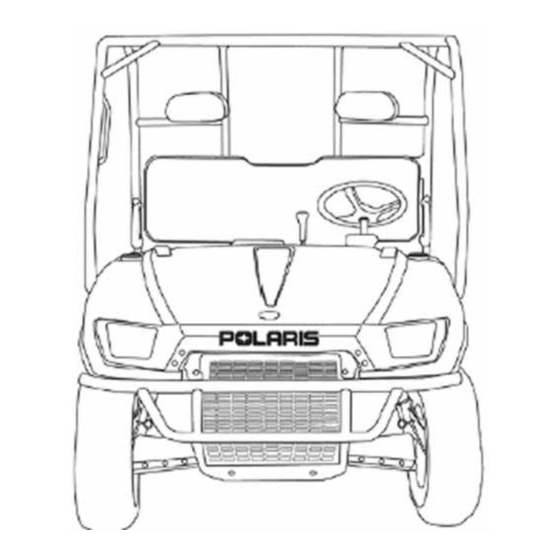
Polaris RANGER XP 700 4X4 Service Manual
Hide thumbs
Also See for RANGER XP 700 4X4:
- Owner's manual (134 pages) ,
- Service manual (362 pages) ,
- Owner's manual (131 pages)
Table of Contents
Advertisement
Quick Links
Download this manual
See also:
Owner's Manual
Advertisement
Chapters
Table of Contents
Troubleshooting












Need help?
Do you have a question about the RANGER XP 700 4X4 and is the answer not in the manual?
Questions and answers
Does the have wire harness part number 2410678 diagram in it off of a 2006 Polaris 700xp Efi ranger
Based on the provided context, there is no specific mention of wire harness part number 2410678, nor any direct indication that this part number is included in the wiring diagrams for the 2006 Polaris 700 XP EFI Ranger.
However, the context does confirm that the manual includes wiring diagrams labeled for the RANGER 700 EFI 4X4 / 6X6, which covers the chassis, dash, and breakouts. Since the 2006 Polaris Ranger XP 700 EFI falls within this model category, it’s highly likely that the diagrams in the manual are relevant to that vehicle.
To confirm whether part number 2410678 is explicitly included in these diagrams, you would need to cross-reference the wiring diagrams in the manual with a Polaris parts catalog or service manual that lists part numbers.
Do you have access to the full wiring diagram pages or want help locating that part number in a Polaris parts database?
This answer is automatically generated
i need the wireing harness that goes from 4 wheel assist switch to the front differential plug